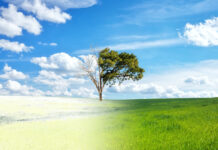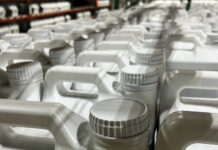Sure, soils are dark and dirty. They are underground, where they’re happy performing backstage duties while the flowers and plants steal the center-stage show. Soils are the support staff to the top executive trees and middle management staff that hold court over the landscape. Earth is an element most people don’t think about… until they have to clean it off of their skin or their clothes in the form of mud.
But now the Soil Science Society of America (SSSA) is sharing research revealing soil’s critical role in sports and recreation, particularly how soil texture is important to sports performance and safety, as well as field durability.
The dirt on soil
Let’s start with the general facts about soils. The SSSA lists the following as soils relate to recreation:
- Soils keep plants, trees and animals in our forests and parks healthy.
- Tree root systems need soils for support, for nutrients and to hold rainwater for later use.
- Sandy surfaces of beaches are home to not only soil microbes, but also larger animals like crabs.
- Healthy turfgrass for field sports rely on soils for nutrients, water and support.
- Soils help clean the water in rivers and lakes, to provide for healthy water sports.
Soil texture matters
Soil is proving critically important for a variety of sports and recreation, says Mary Beth Adams, a soil scientist with the U.S. Forest Service. “Walks in forests, soccer games and horse races all depend on soil,” she says. “Thousands of folks enjoy sports more because someone took the time to get the soil right.”
Think about the turf quality and hardiness necessary for sports play. To grow quality turf and maximize its durability, the soil has to be right since it’s the foundation. Soil supports plant life by providing the physical medium for turf to grow in and holding water that the plants need to grow.
Soil texture is a very important consideration when it comes to sports, Adams says. Soil particles come in different sizes from very small to relatively large. The smallest particles tend to be clay, while the largest particles are usually sand.
“If a single marble is the size of a clay particle, then a silt particle would be the size of a basketball,” Adams explains. “In relation to these, the largest soil particle — sand — would be about half the distance you’d have to run to get to first base in baseball.”
So if soil texture describes the relative composition of sand, silt and clay, landscape professionals can learn more about a particular soil’s properties to help better manage them.
This is why soil texture on a sports field matters a great deal, Adams says. “An athlete needs to be able to run quickly (think of horse racing or football) and maneuver (field hockey, soccer) to be able to participate at his or her best,” she says. “So the running surface matters. Soil is also important for maximizing the safety of the athlete. A field with too much clay would catch a cleat, and one with too much sand would not allow for traction.”
Durability of the sports field matters, too. “What if you were playing a game of golf, and the texture was wrong for a sand trap?” Adams asks. “The sand could blow away. Or if the sand trap had too many clay particles, the ball could get stuck in the mud.
For safety, durability and even financial reasons, using the right soil for your sports field or play area and maintaining it for optimum conditions is important for everyone’s outdoor fun.”











![[VIDEO] Dickies®: Discover Workwear That’s Anything But Uniform](https://turfmagazine.com/wp-content/uploads/2023/06/1647663814-4b1a2a7742790a9b1e97a3b963477850192e1d6a9dfba9b07214a77bae25d6e3-d-218x150.jpg)



























![[VIDEO] Dickies®: Discover Workwear That’s Anything But Uniform](https://turfmagazine.com/wp-content/uploads/2023/06/1647663814-4b1a2a7742790a9b1e97a3b963477850192e1d6a9dfba9b07214a77bae25d6e3-d-324x160.jpg)